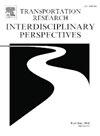超轻轨和快速公交的生命周期成本和可持续性评估比较
IF 3.8
Q2 TRANSPORTATION
Transportation Research Interdisciplinary Perspectives
Pub Date : 2025-07-01
DOI:10.1016/j.trip.2025.101529
引用次数: 0
摘要
本文介绍了两种中等容量城市交通系统-轻轨(VLR)和快速公交(BRT)的全面生命周期环境和经济可持续性。考虑到相同的系统功能单元,考文垂轻轨(CVLR)项目和剑桥郡引导公交(CGB)的现实案例研究分别作为VLR和BRT系统的代表进行了评估。LCA量化了从原材料到回收再到退役的所有阶段的温室气体排放。与CGB相比,CVLR在整个生命周期内的温室气体总排放量高出48%,在生命周期的各个阶段存在很大差异。在材料生产、施工和运输过程中,CVLR的排放量明显更高,这主要是由于超高性能纤维增强混凝土的相关生产和制造以及复杂的施工方法。由于需要更大的车厂规模和额外的车站,CVLR的运行排放量也高出21%。我们的新发现表明,快速公交系统更具成本效益和碳效益。本文章由计算机程序翻译,如有差异,请以英文原文为准。
Comparative lifecycle cost and sustainability assessments between very-light rail and bus-rapid transit
This paper presents a comprehensive lifecycle environmental and economic sustainab ility of two medium-capacity urban transit systems − Very Light Rail (VLR) and Bus Rapid Transit (BRT). Considering identical systems’ functional unit, real-world case studies of Coventry Very Light Rail (CVLR) project and Cambridgeshire Guided Busway (CGB) were evaluated as representatives of the VLR and BRT systems, respectively. The LCA’s quantified greenhouse gas emissions across all phases, from raw materials to recycling and decommissioning. CVLR exhibited 48% higher total lifecycle GHG emissions compared to CGB, with substantial differences across lifecycle phases. Emissions were significantly higher for CVLR during material production, construction and transport, which is largely due to associated production and manufacturing of ultra high-performance fibre-reinforced concrete and complex construction methods. CVLR also had 21% higher operational emissions attributed to a larger required depot size and an additional station. Our new findings exhibit that BRT system is more cost- and carbon-effective.
求助全文
通过发布文献求助,成功后即可免费获取论文全文。
去求助
来源期刊

Transportation Research Interdisciplinary Perspectives
Engineering-Automotive Engineering
CiteScore
12.90
自引率
0.00%
发文量
185
审稿时长
22 weeks
 求助内容:
求助内容: 应助结果提醒方式:
应助结果提醒方式:


